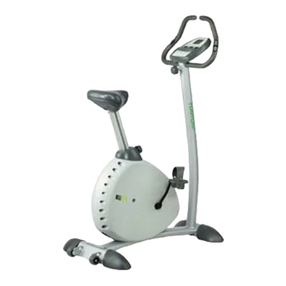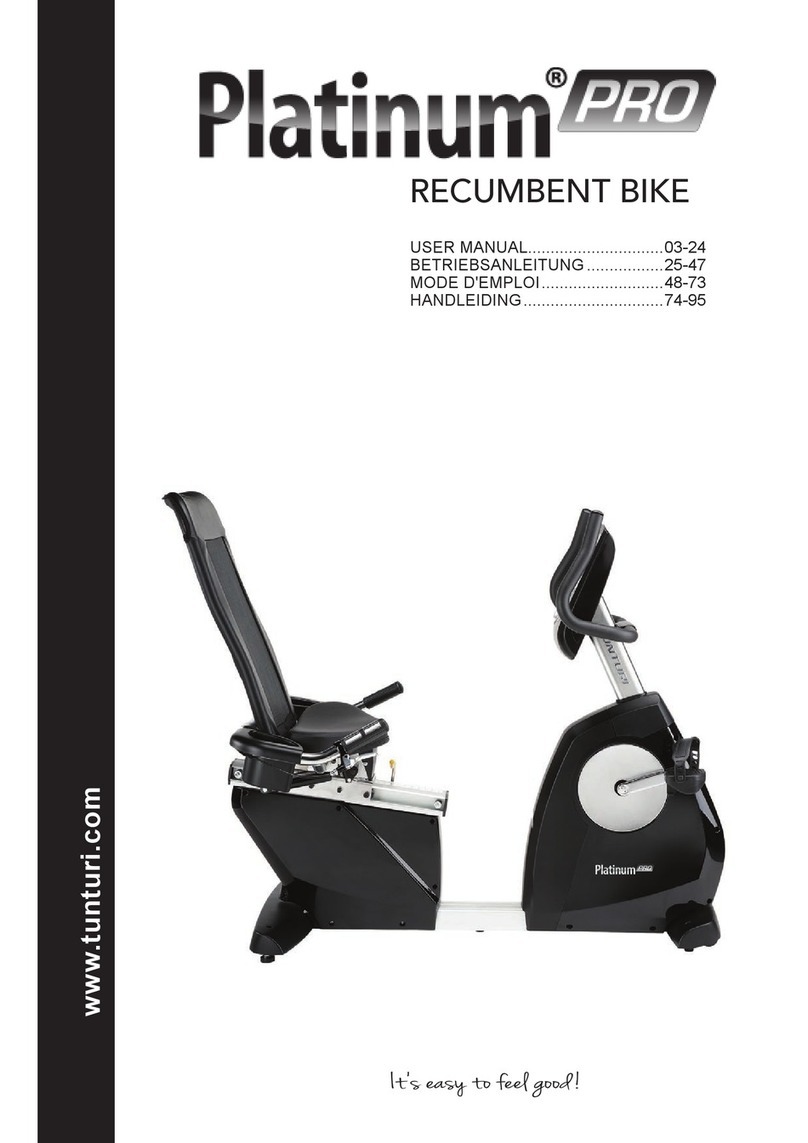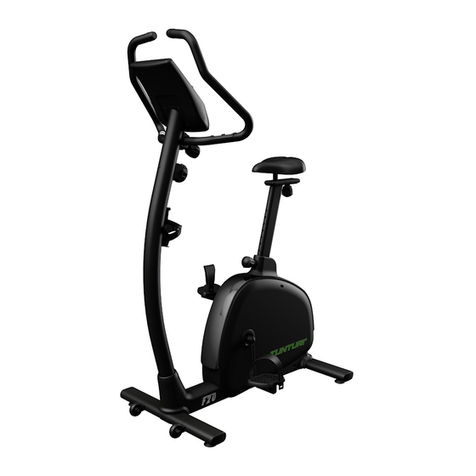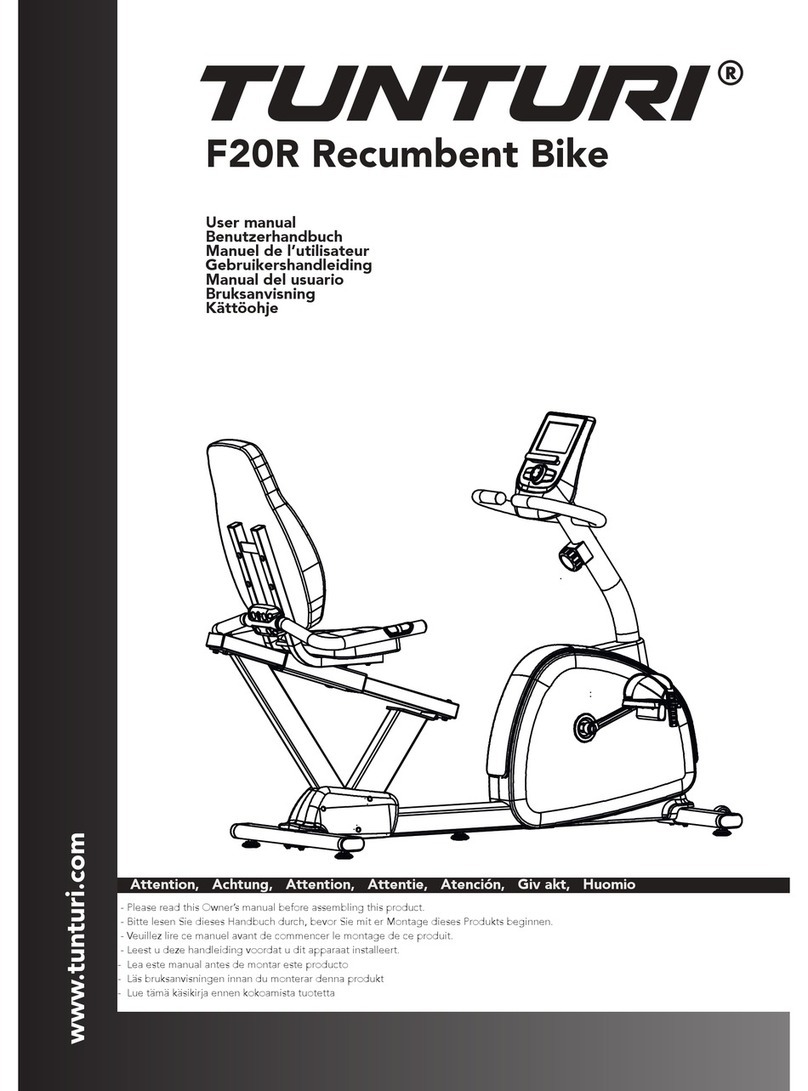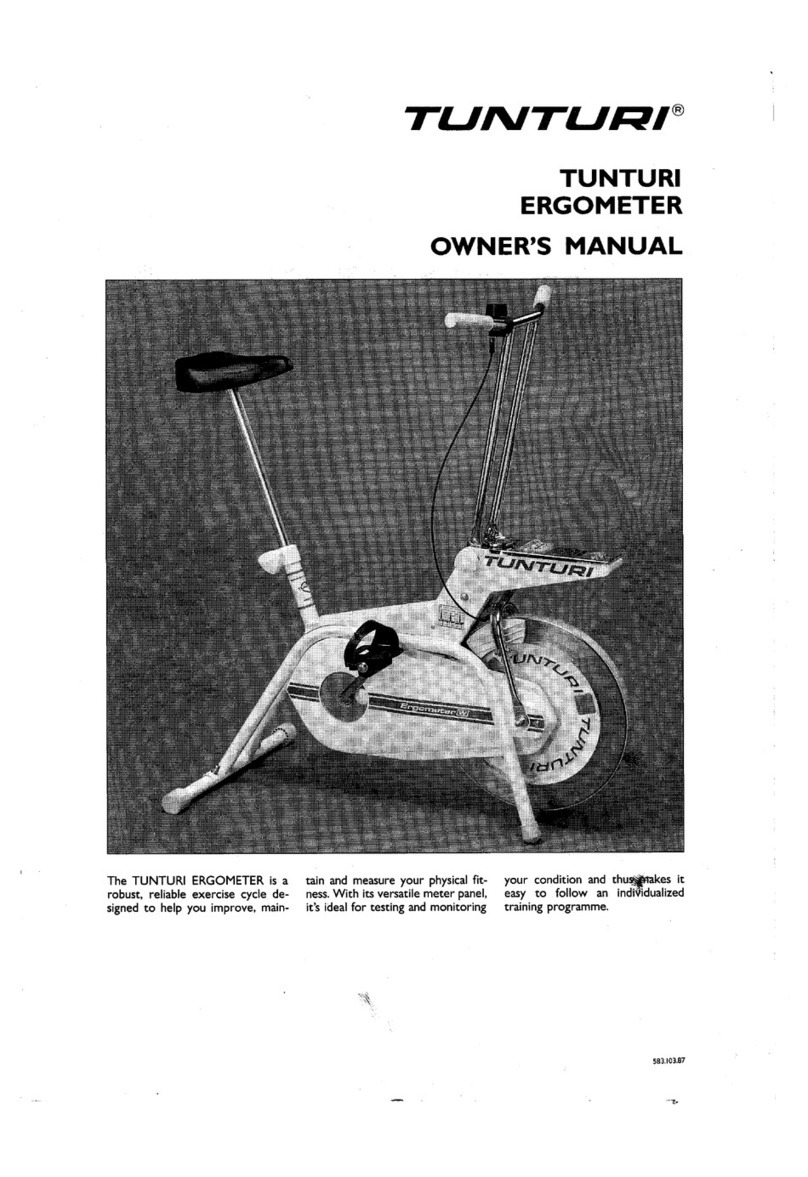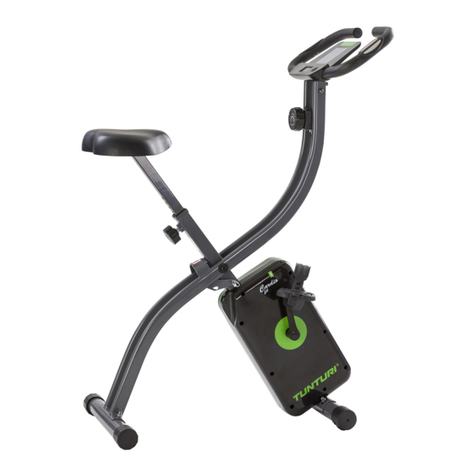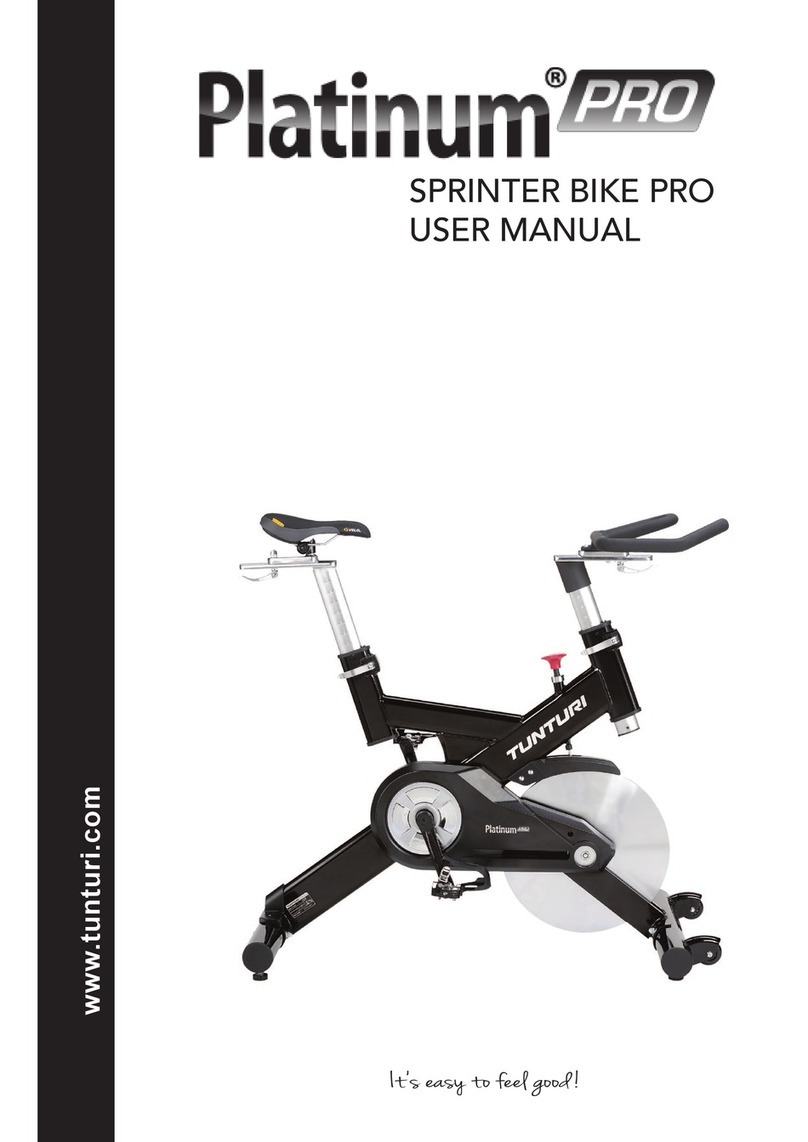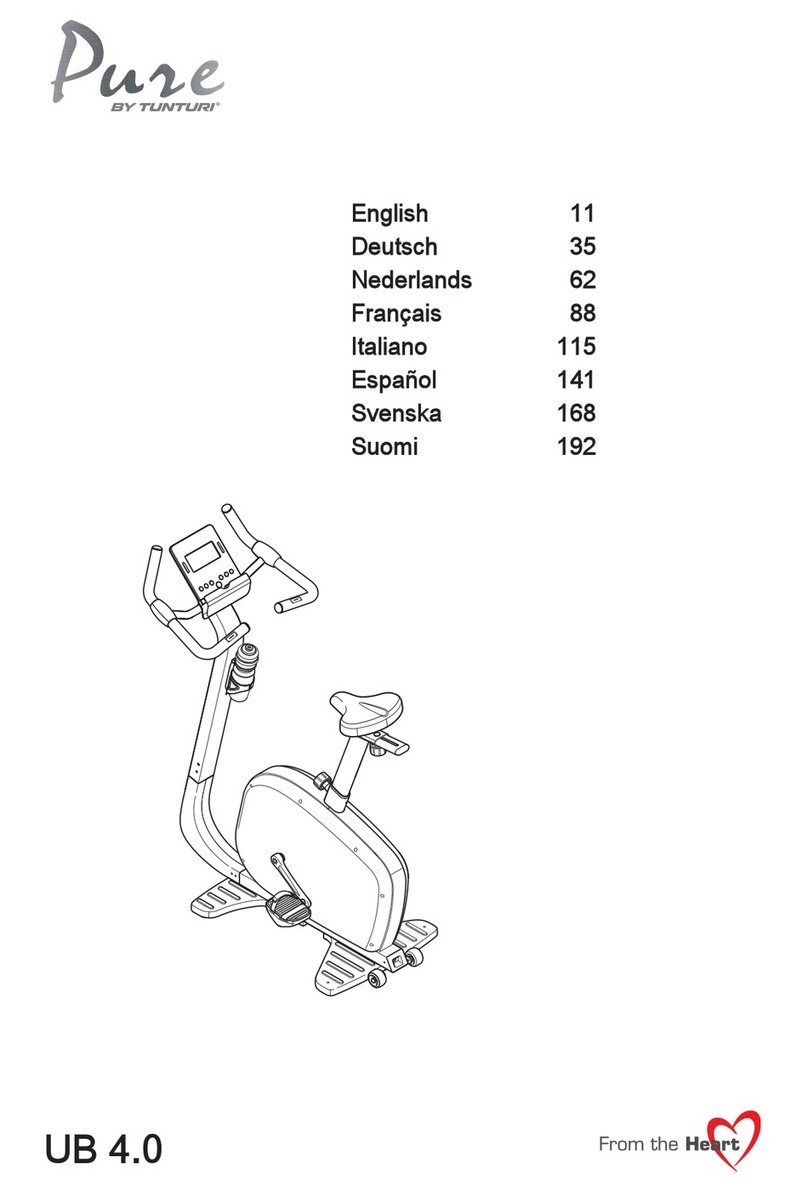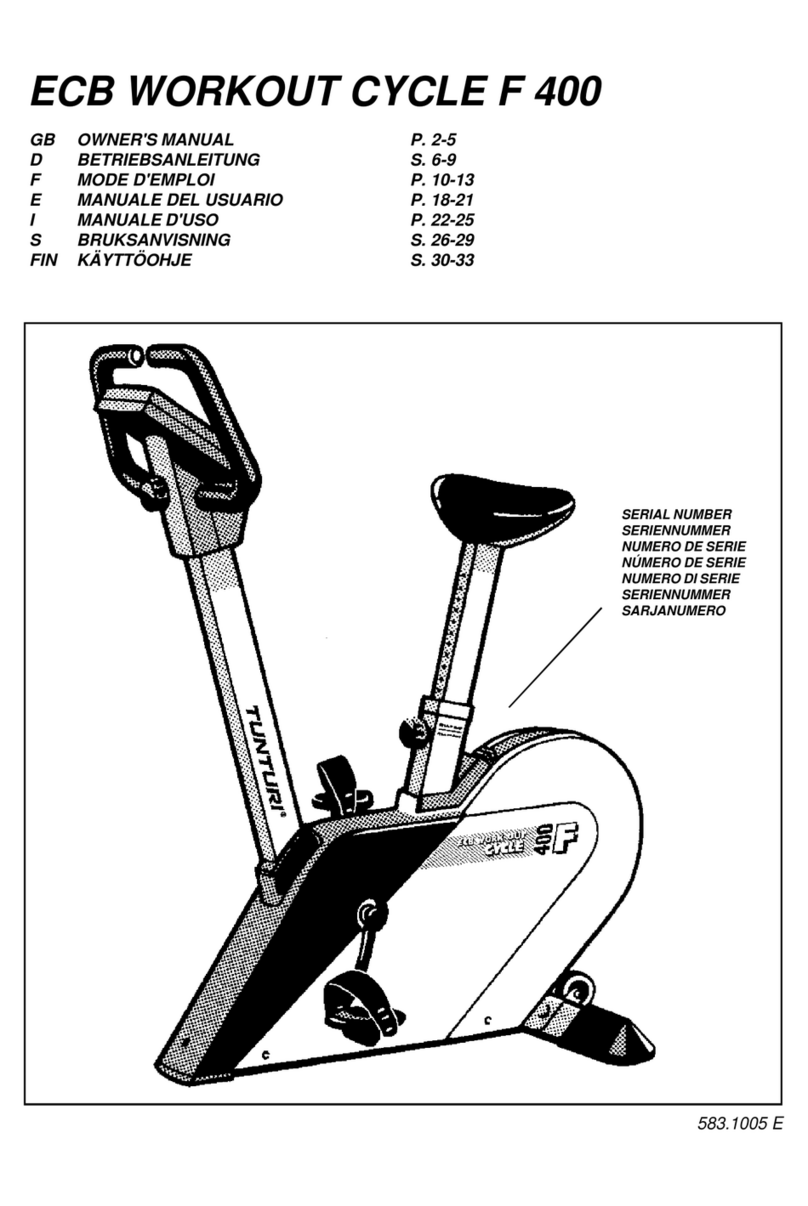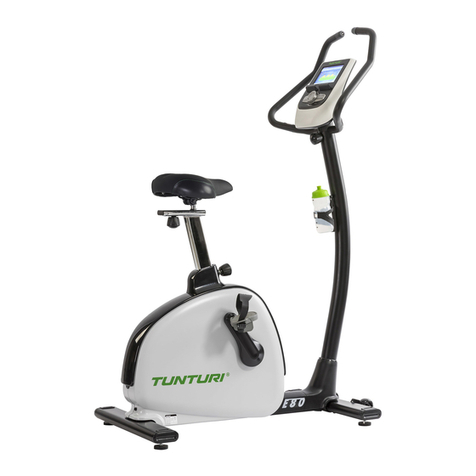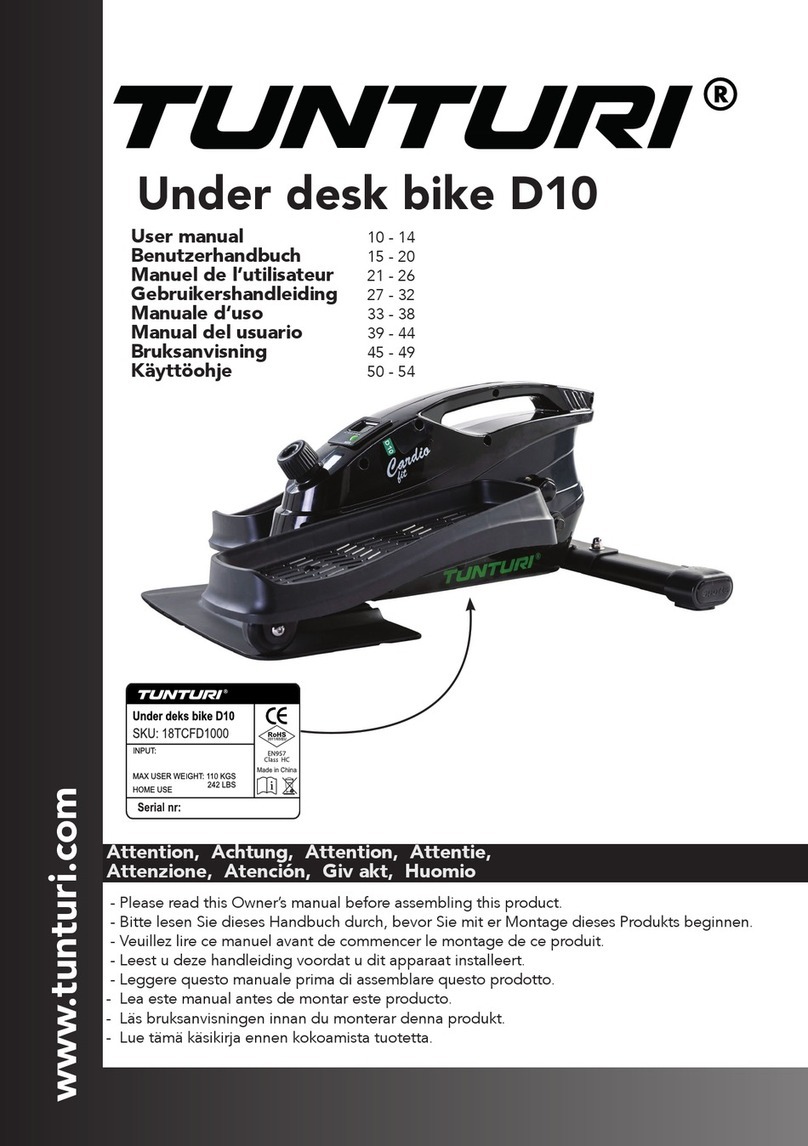You should exercise at least three times a week, 30
minutes at a time, to reach a basic fitness level.
Maintaining this level requires a few exercise sessions
eachweek.Oncethebasicconditionhasbeenreached,
it is easily improved, simply by increasing the number
of exercise sessions. You should start slowly at a low
pedalling speed and low resistance, because for an
overweightpersonstrenuousexercisemaysubjectthe
heart and circulatory system to excessive strain. As
fitnessimproves,resistanceandpedallingspeedcanbe
increased gradually.
HEART RATE
Nomatterwhat yourgoal, you’llget thebestresultsby
trainingattherightlevelofeffort,andthebestmeasure
is your own heart rate.
pULSE MEASUREMENT WITH
HANDGRIp SENSORS
Hand pulse is measured using the sensors located on
thehandlebars.Thesensorsmeasureelectricimpulses,
which are formed when the person’s heart is beating.
Measurement is started by touching both handlebar
sensors simultaneously. To ensure reliable pulse
measurement, skin must be slightly moist and skin
contact with sensors must be continuous. If skin is too
dryortoowet,thehandpulsemeasurementoperation
is less reliable.Try to keep your upper body and palms
relaxed and still.
TELEMETRIC HEART RATE MEASUREMENT
The most reliable heart rate measurement is achieved
with a telemetric device, in which the electrodes of
the transmitter fastened to the chest transmit the
pulses from the heart to the console by means of an
electromagnetic field.
NOTE!Ifyouarefittedwithapacemaker,pleaseconsult
a physician before using a wireless heart rate monitor.
If you want to measure your heart rate this way
duringyour workout,moistenthe grooved electrodes
on the transmitter belt with saliva or water. Fasten
the transmitter just below the chest with the elastic
belt, firmly enough so that the electrodes remain in
contact with the skin while exercising, but not so tight
that normal breathing is prevented. If you wear the
transmitterandbeltoveralightshirt,moistentheshirt
slightly at the points where the electrodes touch the
shirt.Thetransmitterautomaticallytransmitstheheart
rate reading to the console up to a distance of about 1
m.
If the electrode surfaces are not moist, the heart-rate
readingwillnotappearonthedisplay.Iftheelectrodes
are dry, they must be moistened again. Allow the
electrodes warm up properly to ensure accurate heart
rate measurement. If there are several telemetric
heart rate measurement devices next to each other,
the distance between them should be at least 1.5 m.
Similarly, if there is only one receiver and several
transmittersin use,onlyone personwith atransmitter
shouldbewithintransmissionrange.Thetransmitteris
switchedtoanactivestateonlywhenitisbeingusedfor
measurement.Sweatandothermoisturecan,however,
keepthetransmitterinanactivestateandwastebattery
energy.Therefore it is important to dry the electrodes
carefully after use.
When selecting training attire, please note that some
fibersusedinclothes(e.g.polyester,polyamide)create
static electricity, which may prevent reliable heart
rate measurement. Please note that a mobile phone,
television and other electrical appliances form an
electromagnetic field around them, which will cause
problems in heart rate measurement.
First find your maximum heart rate i.e. where the rate
doesn’t increase with added effort. If you don’t know
your maximum heart rate, please use the following
formula as a guide:
220 - AGE
Theseareaveragevaluesandthemaximumvariesfrom
persontoperson.Themaximumheart-ratediminishes
onaveragebyonepointperyear.Ifyoubelongtoarisk
group, ask a doctor to measure your maximum heart
rate for you.
Wehavedefinedthreedifferentheart-ratezonestohelp
you with targeted training.
BEGINNER: 50-60 % of maximum heart-rate
Also suitable for weight-watchers, convalescents
and those who haven’t exercised for a long time.
Three sessions a week of at least a half-hour each is
recommended.Regularexerciseconsiderablyimproves
beginners’respiratoryandcirculatoryperformanceand
you will quickly feel your improvement.
TRAINER: 60-70 % of maximum heart-rate
Perfect for improving and maintaining fitness. Even
reasonableeffortdevelopstheheartandlungseffectively,
training for a minimum of 30 minutes at least three
times a week. To improve your condition still further,
increase either frequency or effort, but not both at the
same time!
ACTIVE TRAINER: 70-80 % of maximum heart-rate
Exercise at this level suits only the fittest and
presupposes long-endurance workouts.
